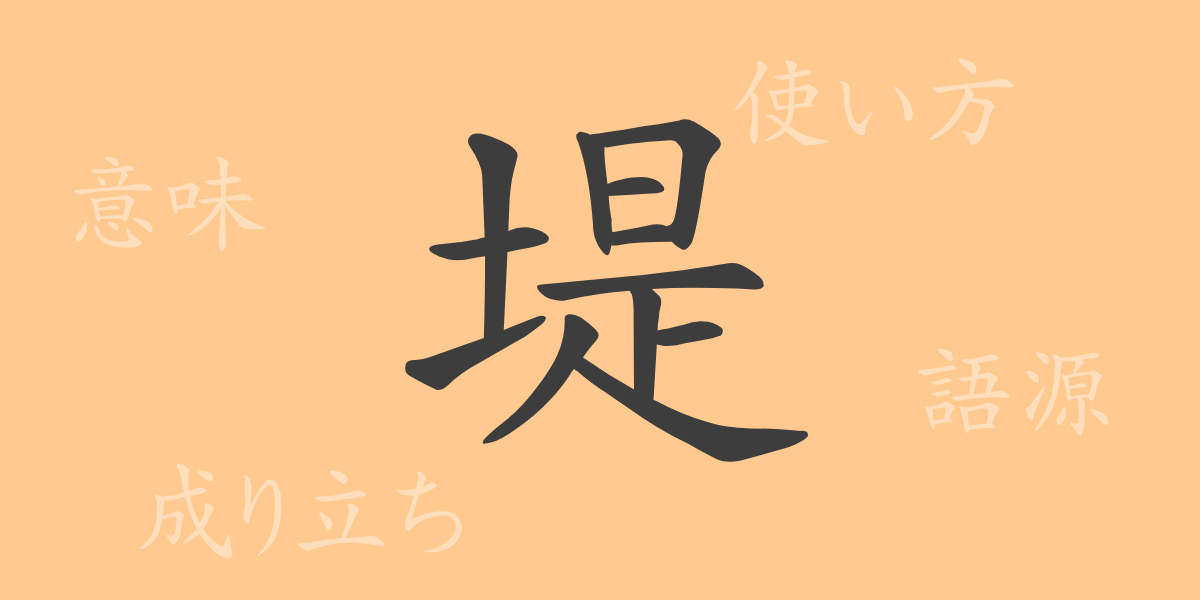Japanese characters, each with a deep history and rich meaning, embody the complexity of the language. The kanji ‘堤(テイ)’ is no exception. In this article, we explore everything from the origins of ‘堤’ to its modern usage and role in Japanese culture, including phrases and idioms where it is used. Let’s delve into the story behind ‘堤’, a kanji familiar in everyday Japanese, and uncover its charm.
Origins of ‘堤(テイ)’
The kanji ‘堤’ originates from ancient China, symbolizing embankments or levees made by piling up soil, primarily to protect lands from floods. It combines the radical for soil ‘土’ with the phonetic component ‘是’, illustrating the act of building up earth. As a character, ‘堤’ merges the notion of soil and the labor of people, symbolizing the earthen walls built to protect human settlements.
Meaning and Usage of ‘堤(テイ)’
‘堤’ generally means embankments or levees built to prevent river floods or sea erosion. It can also metaphorically represent any barrier intended to prevent difficulties. In Japanese, this character forms words like ‘堤防(ていぼう)’ and ‘堤堰(ていえん)’, related to flood control and irrigation.
Readings, Stroke Count, and Radical of ‘堤(テイ)’
Let’s look at the basic information about the kanji ‘堤’:
- Readings: On’yomi is ‘テイ’, kun’yomi is ‘つつみ’.
- Stroke Count: A total of 12 strokes.
- Radical: The radical is ‘土部(つちへん)’ related to earth or soil.
Phrases, Idioms, and Proverbs Using ‘堤(テイ)’
Phrases and idioms that include ‘堤’ reflect its symbolic meanings. Here are some examples:
- 堤防(ていぼう): An embankment or levee to prevent river flooding.
- 堤上(ていじょう): Literally ‘on the embankment’, can also relate to place names associated with levees.
- 堤下(ていか): ‘Below the embankment’, referring to areas downstream or protected by a levee.
Conclusion on ‘堤(テイ)’
The kanji ‘堤’ vividly illustrates its roles from its formation to its contemporary applications, deeply intertwined with nature and human lives in Japan. It serves not only as a physical barrier against natural disasters but also metaphorically as support to overcome difficulties. Understanding the rich meanings behind this kanji helps us appreciate the depth of the Japanese language and its culture of coexisting with nature.

























